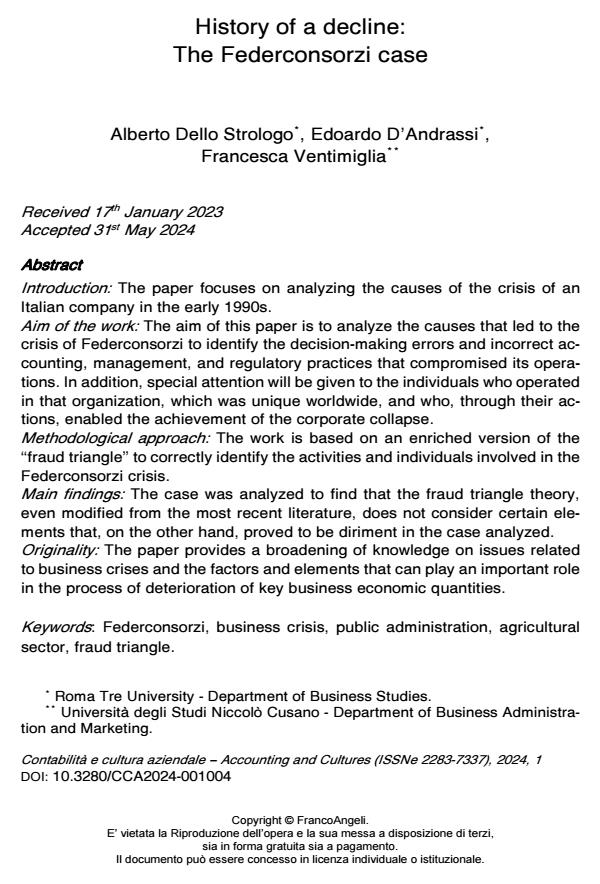History of a decline: The Federconsorzi case
Journal title CONTABILITÀ E CULTURA AZIENDALE
Author/s Alberto Dello Strologo, Edoardo D’Andrassi, Francesca Ventimiglia
Publishing Year 2024 Issue 2024/1
Language English Pages 23 P. 79-101 File size 91 KB
DOI 10.3280/CCA2024-001004
DOI is like a bar code for intellectual property: to have more infomation
click here
Below, you can see the article first page
If you want to buy this article in PDF format, you can do it, following the instructions to buy download credits

FrancoAngeli is member of Publishers International Linking Association, Inc (PILA), a not-for-profit association which run the CrossRef service enabling links to and from online scholarly content.
Introduction: The paper focuses on analyzing the causes of the crisis of an Italian company in the early 1990s. Aim of the work: The aim of this paper is to analyze the causes that led to the crisis of Federconsorzi to identify the decision-making errors and incorrect accounting, management, and regulatory practices that compromised its operations. In addi-tion, special attention will be given to the individuals who operated in that organi-zation, which was unique worldwide, and who, through their actions, enabled the achievement of the corporate collapse. Methodological approach: The work is based on an enriched version of the “fraud triangle” to correctly identify the activities and individuals involved in the Feder-consorzi crisis. Main findings: The case was analyzed to find that the fraud triangle theory, even modified from the most recent literature, does not consider certain elements that, on the other hand, proved to be diriment in the case analyzed. Originality: The paper provides a broadening of knowledge on issues related to business crises and the factors and elements that can play an important role in the process of deterioration of key business economic quantities.
Keywords: Federconsorzi, business crisis, public administration, agricultural sector, fraud triangle.
Alberto Dello Strologo, Edoardo D’Andrassi, Francesca Ventimiglia, History of a decline: The Federconsorzi case in "CONTABILITÀ E CULTURA AZIENDALE" 1/2024, pp 79-101, DOI: 10.3280/CCA2024-001004